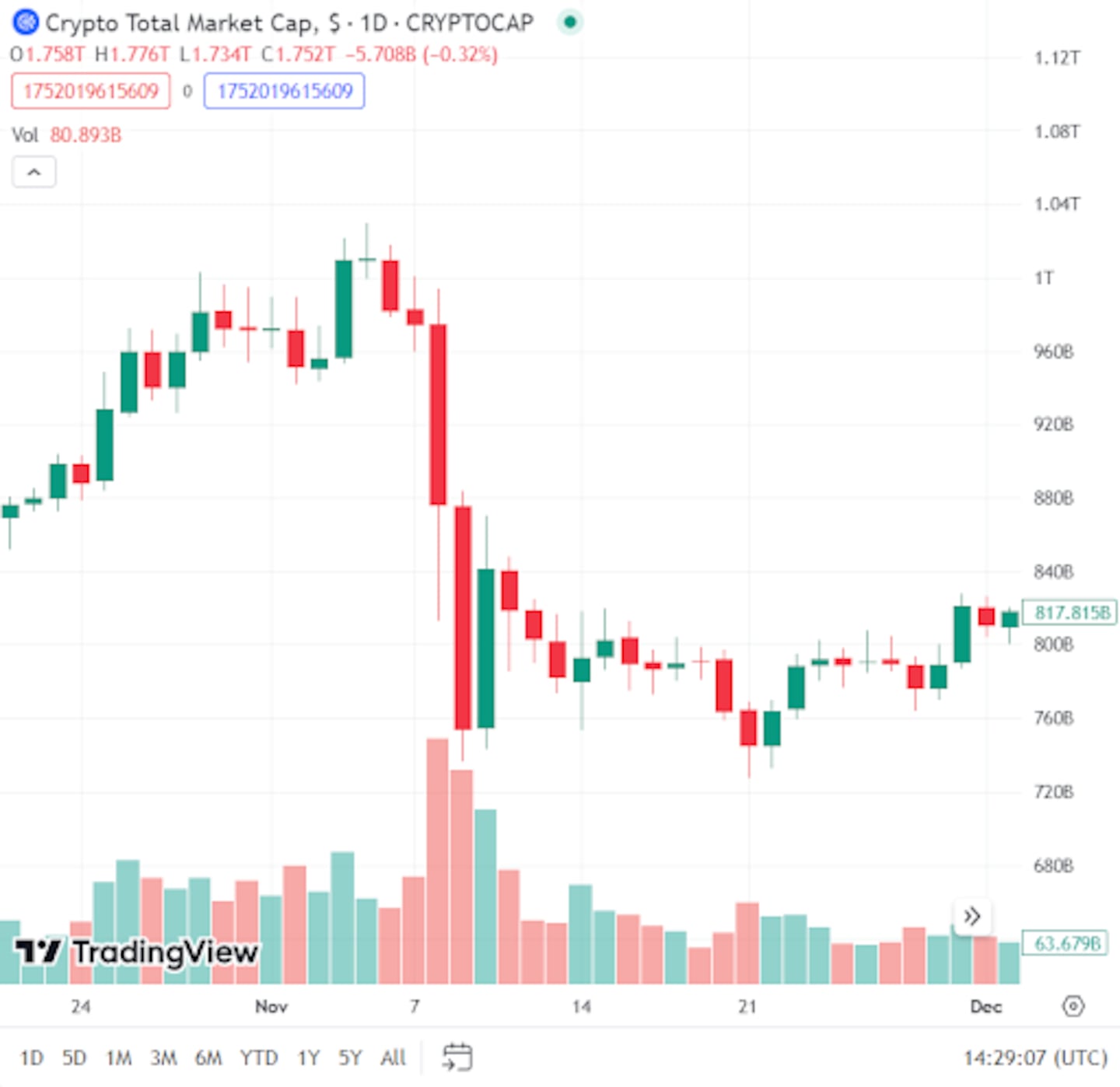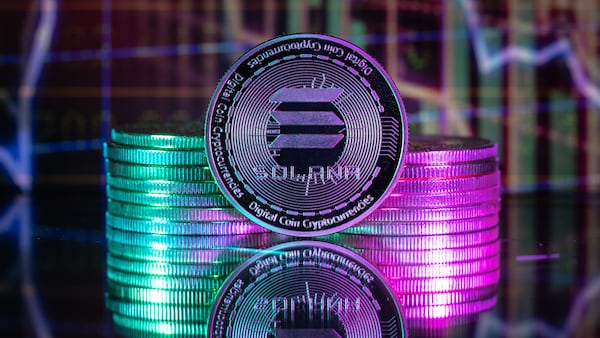- Solana has seen industry-leading levels of growth and activity in recent months.
- A series of airdrops have helped usher in its resurgence.
- Speculators have flowed into the network, despite outages and fallout from FTX.
Solana enthusiasts have long dubbed the layer 1 blockchain an “Ethereum killer.” But a better moniker might be “bear market survivor.”
Whipsawed by the crash in DeFi valuations in 2022 and its exposure to FTX, a former business partner, Solana’s SOL token lost 94% of its value in that annus horribilis, which was way worse than the 67% decline in Ether.
DeFi users feared the blockchain network wouldn’t be able to recover and was doomed to become just another forgotten project.
Yet lately many in the Solana community are basking in its rekindled radiance.
Its assets have steadily grown to about $1.6 billion, according to DefiLlama. And SOL’s 450% surge during the past 12 months trounces Ether’s 82% gain.
Moreover, last year the number of daily active Solana wallets tripled compared to a 3% uptick in active Ethereum wallets, according to Messari, the crypto research firm.
Major issues
Still, there are major issues.
Solana has long been plagued by outages to its blockchain network, which makes it hard to establish the blockchain as a reliable processor of transactions.
And for all its heat, Solana’s total value still comprises only 2.7% of the DeFi market compared to Ethereum’s 59.5% slice.
BREAKING: @solana DAILY ACTIVE ADDRESSES JUMP TO OVER 630K, 40% MORE THAN @ethereum pic.twitter.com/pnVfJQo4oo
— Step Data Insights (@StepDevInsights) December 9, 2023
But everyone loves a comeback story, and Solana has a good one.
FTX and the great rebuild
Solana sprang from a whitepaper published in 2017 by Anatoly Yakovenko, a Ukrainian-born software engineer educated at the University of Illinois.
Solana launched the SOL token in March 2020, and two months later created its first set of transactions. Solana caught fire during DeFi Summer in 2021, a heady time when coin values skyrocketed and new decentralised finance projects hit the scene every week.
Venture capital investment in crypto soared. According to DefiLlama, crypto projects raised $40 billion in 2021, more than six times the level the prior year.
Few firms threw money into new crypto projects like FTX, the crypto exchange co-founded and led by Sam Bankman-Fried. The crypto wunderkind also ran a hedge fund called Alameda Research and was a big fan of Solana.
He tweeted he was a buyer of Solana’s SOL token. In his book about Bankman-Fried, Going Infinite, author Michael Lewis said the FTX chief owned anywhere between 10% and 15% of the entire SOL supply through his companies. Solana ecosystem tokens became known as “Sam coins” in the crypto space.
I'll buy as much SOL has you have, right now, at $3.
— SBF (@SBF_FTX) January 9, 2021
Sell me all you want.
Then go fuck off.
Then, FTX collapsed in November 2022., wiping out about $275 billion dollars from the crypto market. It tanked investor confidence in the entire sector.

A year later, while on trial, Bankman-Fried attributed the crash in FTX’s FTT token and Solana’s token to the collapse of his exchange, confirming the hunches of crypto commentators the year before.
In November, a US jury found him guilty on seven counts of fraud and conspiracy in connection with the legerdemain he used at FTX and Alameda.
It’s taken about a year for Solana to dig out from under the rubble of FTX. Airdrops have helped. These are distributions of free tokens designed to whet the appetite among users of new protocols.
They can be quite lucrative but timing is everything.
In November, the Pyth and Jito protocols launched airdrops worth a combined $290 million into the Solana ecosystem, which drove hype, but they dropped rapidly and deeply in the following weeks.
Another driver of Solana’s popularity: memecoins. These tokens have become a popular feature on Solana’s blockchain network. Crypto speculators have piled into Bonk and similar offerings on to capture outsized gains.
Solana’s low transaction fees have provided another edge against Ethereum, which in times of heightened activity or network congestion can see fees cost many dollars per transaction.
Solana can process 65,000 transactions per second compared to 15 for Ethereum, which means Solana is probably more scalable than its older rival.
Solana vs Ethereum, Binance Smartchain, Polkadot, Cardano and Tron
— S◎L m8s 🤝 (@Solana_Mates) April 15, 2021
Solana is fast + scalable + composable + decentralized
☀️@solana $SOL $ETH $BNB $DOT $ADA $TRX pic.twitter.com/1Js7u2NpBl
But cheaper fees and faster processing won’t mean much if Solana can’t stay online. And with 15 outages in the last three years, this has become a serious problem.
In early February, Solana went down again for four hours in what developers called a “performance degradation.” A post-mortem released by Solana on February 9 identified a bug in Solana’s caching code as the source of the outage.
DefiLlama data shows SOL fell 4% fall during the outage. Once back online, Solana token’s price recovered and continued to rise throughout the week.
Solana Labs, the company behind the Solana blockchain, did not immediately respond to DL News’ request for comment.
The outage followed some good news. Yakovenko stated in September 2023 that developers were working on making validation more accessible to Solana users staking small amounts.
Around that time, payments giant Visa announced it would include Solana in its stablecoin settlements infrastructure.
1/ We are excited to announce that Visa has expanded our stablecoin settlement capabilities to merchant acquirers launching pilots with @Worldpay_Global and @Nuvei utilizing the Solana blockchainhttps://t.co/E0TjMO5xiH
— Cuy Sheffield (@cuysheffield) September 5, 2023
Meanwhile, Solana is making inroads in the NFT market. It is now outpacing Ethereum in terms of sales of nonfungible tokens.
For all the drama, the bottom line is that Solana has become a must-have asset when investors are building crypto portfolios.
Its market value is more than twice as much as Cardano and Polkadot combined. And for all of Solana’s limitations the network continues to challenge Ethereum in the race to win over more users.
More than anything, Solana has proven its resilience, at least in terms of its popularity. But until it solves its outage issue, investors may wonder how long that lasts.




